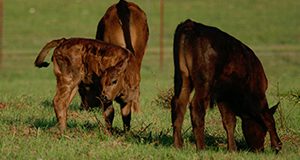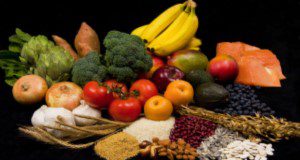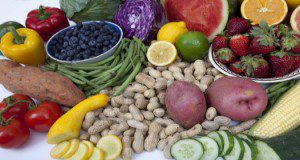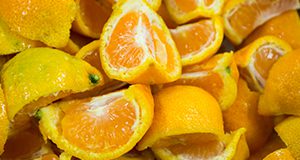Chronic kidney disease (CKD) is considered a public health issue within the United States because an estimated 37 million adults or 15% of the population have this disease. CKD is a disease characterized by the gradual loss of kidney function. Early prevention techniques such as a well-balanced diet reduce the progression of this disease. The purpose of this new 6-page article is to provide an overview of CKD and nutritional considerations. Written by Sofia Acevedo, Danielle Aycart, and Jeanette Andrade, and published by the UF/IFAS Food Science and Human Nutrition Department.
https://edis.ifas.ufl.edu/fs429
Tag: diet
Reducing Your Risk for Heart Disease: The Power of Food
Heart disease is the #1 cause of death among men and women within the United States. Heart disease is an umbrella term for the following heart conditions: angina; irregular heartbeats; heart attacks; heart failure; and stroke. This new 8-page publication of the UF/IFAS Food Science and Human Nutrition Department describes the modifiable risk factors for heart disease and tips to reduce one’s risk for heart disease. Written by Elena B. Smith, Jodi Fitzgerald, Danielle Nelson, Madison Woodard, and Jeanette Andrade.
https://edis.ifas.ufl.edu/fs426
Reducing Your Risk for Type 2 Diabetes: The Power of Food
Type 2 diabetes is a medical condition where you have too much sugar in your blood. According to the Centers for Disease Control, nearly 1 in 10 adults have Type 2 diabetes and 1 in 3 adults have pre-diabetes. This new 14-page publication of the UF/IFAS Food Science and Human Nutrition Department describes the modifiable risk factors for type 2 diabetes and tips to reduce your risk for diabetes. It also includes several example recipes. Written by Elena Torna, Jodi Fitzgerald, Danielle Nelson, Madison Woodard, and Jeanette Andrade.
https://edis.ifas.ufl.edu/fs397
Reducing Your Risk for Arthritis: The Power of Food
Arthritis is the swelling or tenderness of the joints, and one in four adults within the United States have been diagnosed with some type of it. Arthritis can happen because of genetics and aging, but other factors, such as diet and lifestyle, may contribute to it. This new 5-page publication of the UF/IFAS Food Science and Human Nutrition Department describes the modifiable factors contributing to arthritis and tips to reduce risk for arthritis. It also includes some relevant recipe ideas. Written by Sarah Curl, Jodi Fitzgerald, Danielle Nelson, and Jeanette Andrade.
https://edis.ifas.ufl.edu/fs398
Reducing Your Risk for Cancer: The Power of Food
Cancer is the #2 cause of death within the United States, where 2 out of every 5 people will be diagnosed with some form of cancer within their lifetime. Forty-five percent of cancer deaths may have been caused by risk that factors that you can change, such as weight, diet, and lifestyle. This new 6-page publication describes the modifiable risk factors for cancer and tips to reduce your risk for cancer. Written by Jodi Fitzgerald, Danielle Nelson, Madison Woodard, and Jeanette Andrade, and published by the UF/IFAS Food Science and Human Nutrition Department.
https://edis.ifas.ufl.edu/fs392
Nutrition for Health and Fitness: Fiber in Your Diet
Whether you call it dietary fiber, fiber, or roughage, eating a diet rich in this food component is good for your health. This 8-page fact sheet provides tips on how to include foods with fiber in your diet. Written by Linda B. Bobroff, and published by the UF/IFAS Department of Family, Youth and Community Sciences, revised March 2018.
http://edis.ifas.ufl.edu/he697
Diet and Brain Health
Following a healthful diet provides many benefits throughout the life cycle. Maintaining good eating habits as we age can be especially helpful to preserve cognitive health (the ability to remember, learn, and make decisions). This 3-page publication provides tips for healthful eating that may help to maximize brain health in older adults. Written by Pooja Tolani and Wendy J. Dahl and published by the UF/IFAS Department of Food Science and Human Nutrition, January 2018.
http://edis.ifas.ufl.edu/fs304
Additional Nutritional Considerations for Preconditioning Beef Calves
 Feed ingredient selection is not the only factor to consider during a preconditioning process. Recent studies demonstrated that diet composition and frequency of supplementation can have positive or negative effects on calf performance during preconditioning. This 7-page fact sheet focuses on the ways beef cattle producers can modify the nutritional composition of diets and frequency of concentrate supplementation to optimize growth and immunity of preconditioning beef calves or prevent detrimental effects. Written by Philipe Moriel, and published by the UF Department of Animal Sciences, September 2017.
Feed ingredient selection is not the only factor to consider during a preconditioning process. Recent studies demonstrated that diet composition and frequency of supplementation can have positive or negative effects on calf performance during preconditioning. This 7-page fact sheet focuses on the ways beef cattle producers can modify the nutritional composition of diets and frequency of concentrate supplementation to optimize growth and immunity of preconditioning beef calves or prevent detrimental effects. Written by Philipe Moriel, and published by the UF Department of Animal Sciences, September 2017.
http://edis.ifas.ufl.edu/an334




